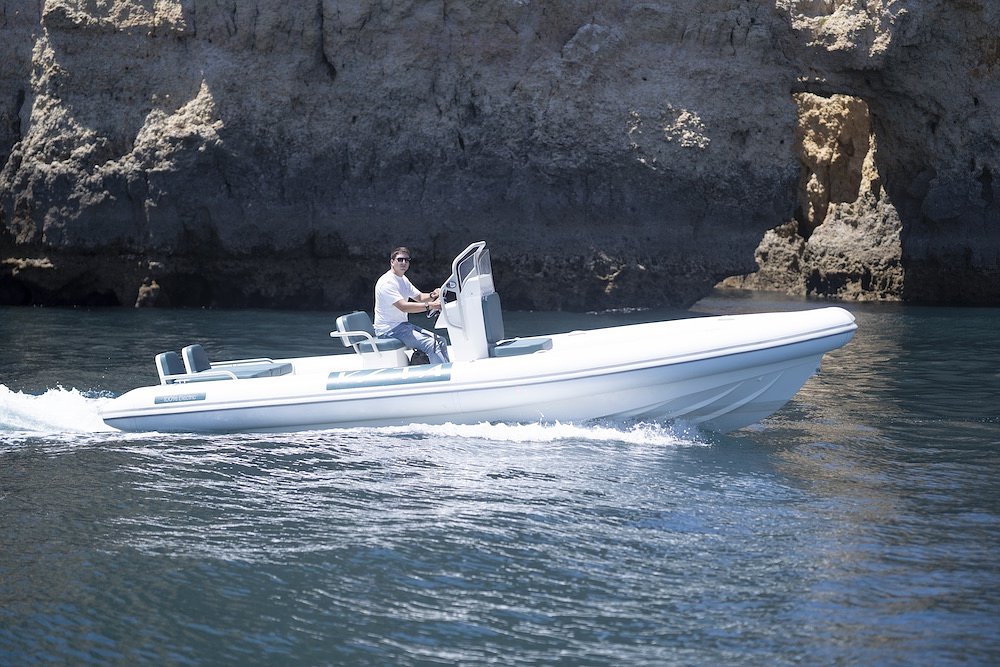Navigating the Future: Electric Boating Trends to Watch in 2025 and 2026

Posted on Mon 3 Mar 2025 · by Roman Wroath - Product Owner
Navigating the Future: Electric Boating Trends to Watch in 2025 and 2026.
By Roman Wroath
As we sail into the mid-2020s, the electric boating industry is riding a wave of innovation, sustainability, and growing consumer interest. With environmental concerns steering the maritime world away from fossil fuels and technology making electric propulsion more practical, 2025 and 2026 promise to be pivotal years for electric boats. Whether you’re a recreational boater, a commercial operator, or just a water enthusiast, here’s a look at the trends shaping the future of electric boating over the next two years.
1. Mainstream Adoption of Electric Recreational Boats
Recreational boating is poised to lead the charge in electric vessel adoption. By 2025, expect to see a significant uptick in electric models hitting lakes, rivers, and coastal waters. Manufacturers like Candela, Vision Marine Technologies, and Greenline Yachts are already pushing the envelope with sleek, energy-efficient designs, and this momentum will only grow. Consumers are increasingly drawn to the quiet operation, reduced maintenance, and eco-friendly credentials of electric boats. In 2026, we’ll likely see these vessels become more affordable as battery costs decline and economies of scale kick in, making electric pontoons, speedboats, and yachts a common sight at marinas worldwide.
2. Expansion of Marine Charging Infrastructure
One of the biggest hurdles for electric boating has been the lack of charging infrastructure, but that’s set to change. By 2025, coastal regions in North America and Europe—particularly in boating hotspots like Florida, California, and the Mediterranean—will likely see a surge in marine charging stations. Governments and private companies are investing heavily in waterfront electrification, with some marinas offering fast-charging docks capable of juicing up a boat in under an hour. By 2026, this network could extend to inland waterways, supported by solar-powered charging buoys and partnerships with renewable energy providers, making range anxiety a thing of the past for electric boaters.
3. Regulatory Push for Zero-Emission Waterways
Environmental regulations are tightening, and they’re steering the boating industry toward electrification. The UK’s Clean Maritime Plan, which mandates zero-emission technology for new vessels in its waters starting in 2025, is just the beginning. Norway’s ambitious goal to ban fossil fuel-powered ships in UNESCO Heritage fjords by 2026 is another harbinger of what’s to come. Expect more countries and regions to follow suit in 2025 and 2026, with incentives like tax breaks or subsidies for electric boat purchases and stricter emissions standards for traditional engines. This regulatory wave will accelerate the shift, especially for commercial operators like ferries and tour boats.
4. Battery Technology Breakthroughs
The heart of any electric boat is its battery, and advancements here will define the industry’s trajectory. By 2025, lithium-ion batteries with higher energy densities and faster charging capabilities will become standard, extending range and reducing downtime. Innovations like solid-state batteries could debut in premium models by 2026, offering even greater efficiency and safety. Meanwhile, sustainable alternatives—such as sodium-ion batteries—might start gaining traction, appealing to eco-conscious boaters. These leaps will make electric boats more competitive with their gas-powered counterparts, especially for longer journeys.
5. Hybrid Systems as a Bridge
While fully electric boats are the future, hybrid systems will play a starring role in 2025 and 2026 as a transitional technology. Combining electric motors with small diesel or hydrogen generators, hybrids offer flexibility for boaters who need extended range or operate in areas without charging infrastructure. Commercial vessels—like fishing boats and small ferries—will lean heavily on hybrids during this period, balancing sustainability with practicality. By 2026, as charging networks expand, pure electric options may start to overtake hybrids, but these dual-power systems will remain a key trend in the interim.
6. Smart Boating: Integration of Digital Tech
Electric boats in 2025 and 2026 won’t just be green—they’ll be smart. Expect vessels equipped with IoT-enabled systems for real-time monitoring of battery health, range, and performance. Apps will let owners track their boat’s status from shore, while AI-driven navigation could optimize routes for energy efficiency. Companies like Kongsberg Digital are already pioneering fleet-monitoring tools, and by 2026, these innovations will trickle down to consumer models, enhancing the boating experience with connectivity and convenience.
7. Growth in Electric Water Sports and Tourism
Electric boats are making waves beyond leisurely cruises. In 2025, look for a boom in electric jet skis and watercraft designed for sports enthusiasts, inspired by pioneers like Taiga Motors. Meanwhile, the tourism sector will embrace electric vessels for eco-friendly excursions—think silent wildlife tours or sunset cruises with zero carbon footprint. By 2026, destinations aiming to attract sustainability-minded travelers will market electric boating as a premium experience, driving demand for rental fleets and guided tours.
8. A Shift in Consumer Mindset
Perhaps the most profound trend is cultural: boaters are rethinking their relationship with the water. In 2025 and 2026, environmental awareness will fuel a shift toward “clean and green” boating, as consumers prioritize sustainability without sacrificing fun. The appeal of whisper-quiet rides, free from the rumble of combustion engines, will win over skeptics. This mindset, paired with growing infrastructure and technology, will cement electric boating as more than a niche—it’ll be the new normal.
The Horizon Ahead
The electric boating revolution is gathering speed, and 2025 and 2026 will be landmark years. From cutting-edge batteries to smarter vessels and tougher regulations, the industry is charting a course toward a sustainable future. Whether you’re docking at a solar-powered marina or gliding silently across a pristine lake, one thing is clear: electric boating isn’t just a trend—it’s the tide lifting all boats. Ready to plug in and set sail?
Roman Wroath
October 2024